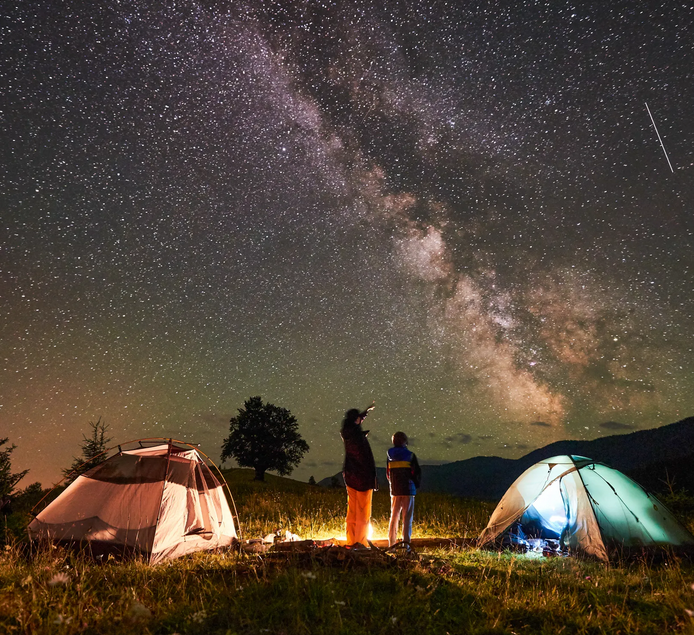

It was a choose your own adventure but I cho ose out and back. Then explored some of the loops


It was a choose your own adventure but I cho ose out and back. Then explored some of the loops


Golden Gate Canyon State Park, Colorado


Latest!
Hopefully not my last lol


I would like to share a story here of the first time I went backpacking.
I rented my equipment from my university’s gym. I had checked the weather, and the low temperature for the weekend was supposed to be about 45F. For sleeping bags I had 2 options, one rated for 32F and 15F. After talking with the student employee behind the counter, we agreed that I didn’t need the 15F. I also decided not take a sleeping pad, because I slept outside on the bare ground quite a few times and felt it was unnecessary. I didn’t think k about insulation at all.
That weekend there was an “unexpected cold snap” and the night time temps dropped into the low 20s. I set up camp right next to a river, and I didn’t stake my rainfly out properly.
Holy shit I thought I was going to die. I took every bit of fabric I had and stuffed it into my sleeping bag, but it still wasn’t enough. All night, condensation collected on the fly and dripped onto my face. It was like Chinese water torture on top of hypothermia. I also failed to build a fire and I couldn’t cook dinner (no firestarters, no gas, and it had rained for a week before I got there).
I was hungry, freezing, and wet. That was the most miserable night of my life. I had to bail. At 5am I left and went to the closest McDonald’s and got some shitty coffee and it was amazing in contrast lol
10 years later and I still overpack clothes because I have a fear that the temp might to drop 20 degrees unexpectedly.
So to anybody reading this and wondering about what bag to get. Go lower than you think you need (you can always sleep on top of it). Use a sleeping pad with good insulation (you can choose not to use it if its too hot). Don’t set up camp right next to a body of water if you’re not ready to deal with extra humidity. And learn how to properly use all your equipment before you set out. A properly staked out rainfly can make the difference between a good night’s sleep and extreme psychological torture.
I swear I can still feel the drip drip drip on my face from that night haha


From wikipedia
It was invented by Alexander Cumming in 1775 but became known as the U-bend following the introduction of the U-shaped trap by Thomas Crapper in 1880
Are you shitting me?
I use privatebin. Has some good features but I dont think it has login


Where’s the source code? Seriously, the only thing I can find for drive & calander are repos that were archived in 2021
You can set up multiple remotes for a repo and push to a local git server and github at the same time


Try running docker logs for the tailscale container to see if it gives any more info
Tailscale keeps the private keys locally, . It just facillitates setting up wireguard. They could steal your private keys, as could any program you install with root access. But it would comepletely destroy their business, and it’s open source. I really dont think they have anything to gain by tricking everyone


I’m just gonna leave this here


Have you tried taking the metwork config out of the compose file and just letting podman handle it?


Gender really is a complex topic huh?


Just to offer the other perspective. I started with podman years ago. I knew very little about containers and I would say it made the learbing curve a lot steeper. Most guides and README’s use docker and when things didnt work I had to figure out if it was networking, selinux, rootless, not having the docker daemon, etc… without understanding fully what those things were because I didn’t know docker. But when I started running stuff on kubernetes, it was really easy. Pods in podman are isomorphic to kubernetes pods. I think the pain was worth it, but it was definitely not easy at the time. Documentation, guides, and networking have improved since then, so it may not be as big of a deal now


Quadlets with podman have completely replaced compose files for me. I use the kuberentes configs. Then I run a tailscale container in the pod and BAM, all of my computers can access that service without have to expose any ports.
Then I have an ansible playbook to log in to the host and start a detached tmux session so my user systemd services keep running. Its all rootless, and just so dang easy.
Underrated meme